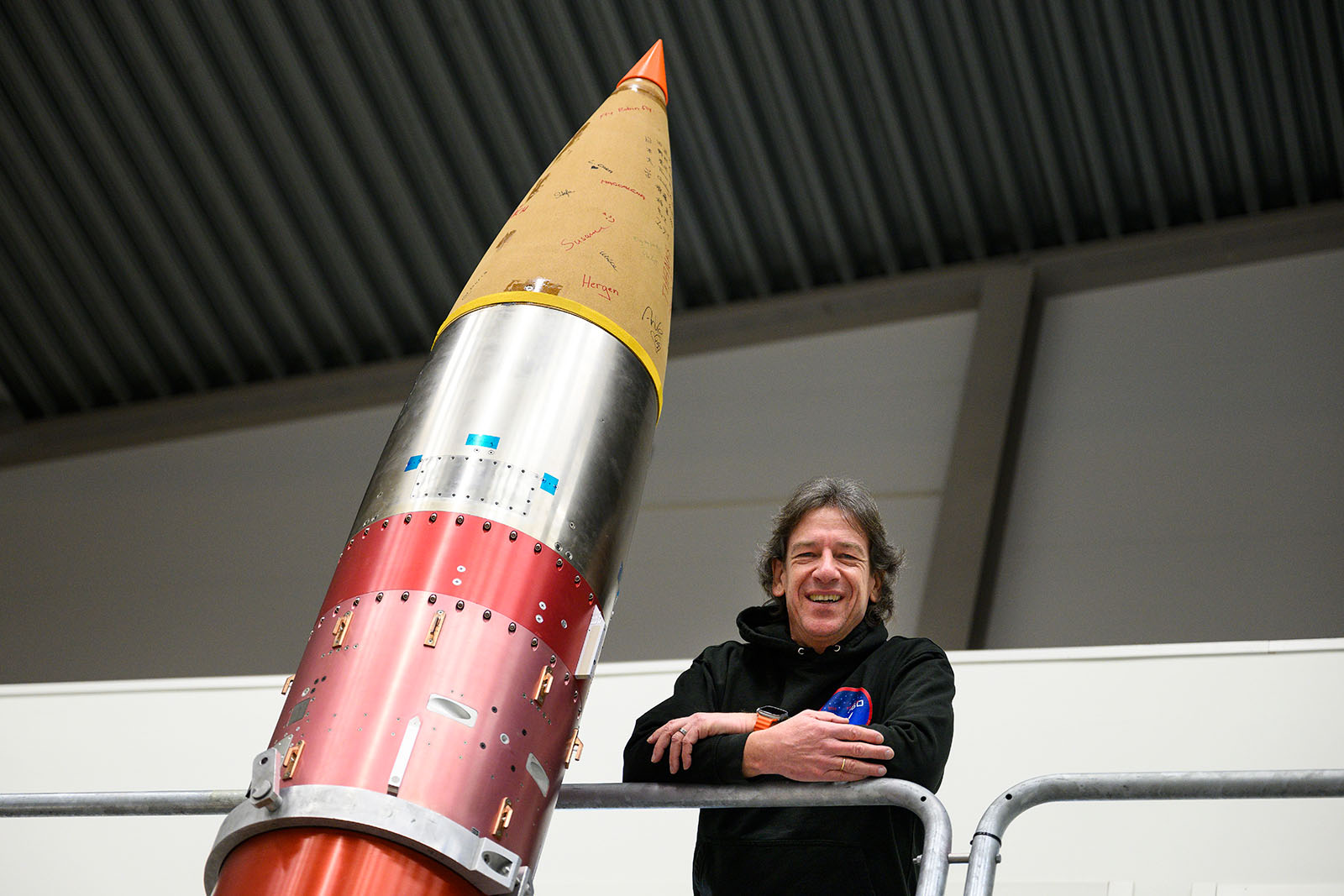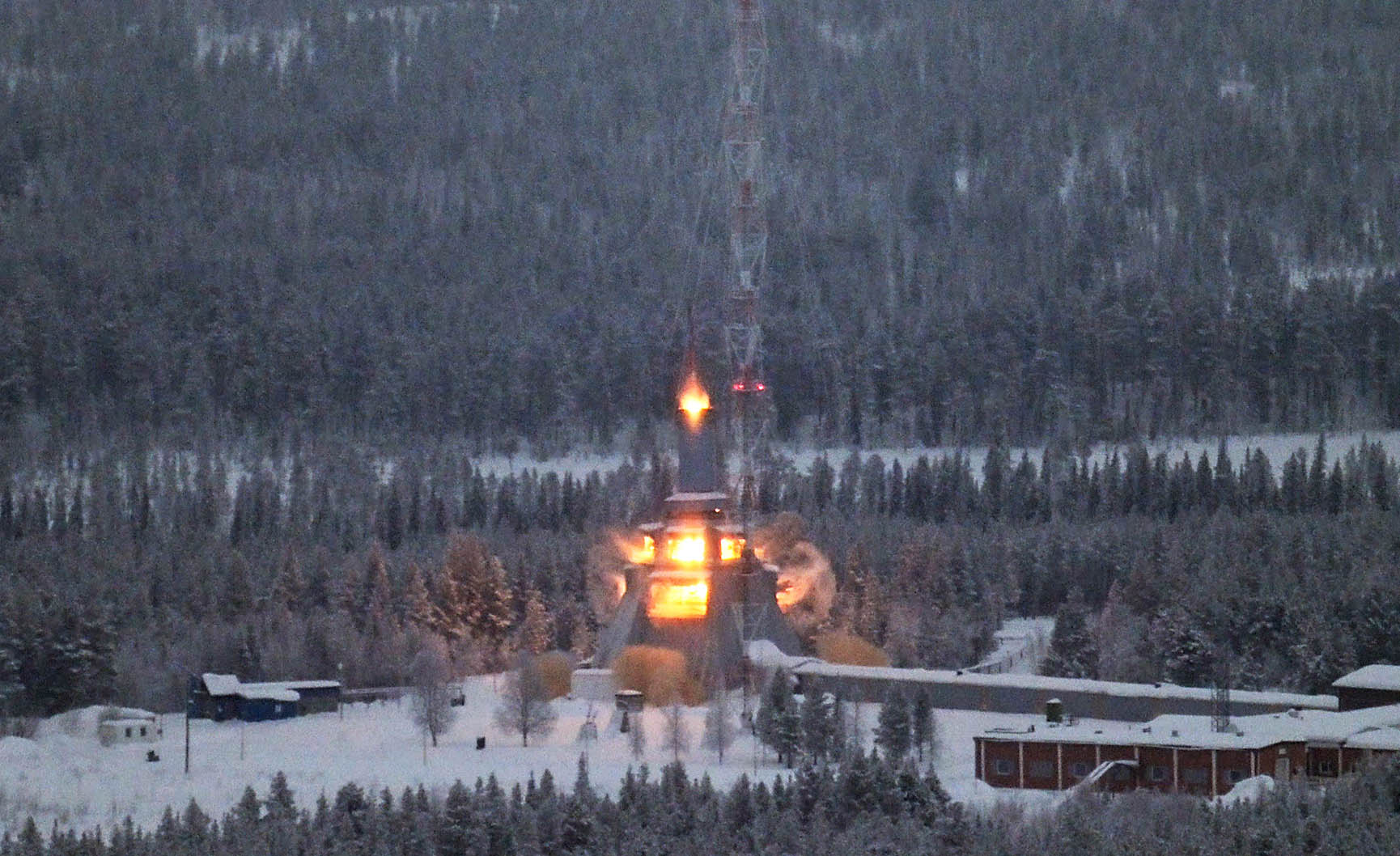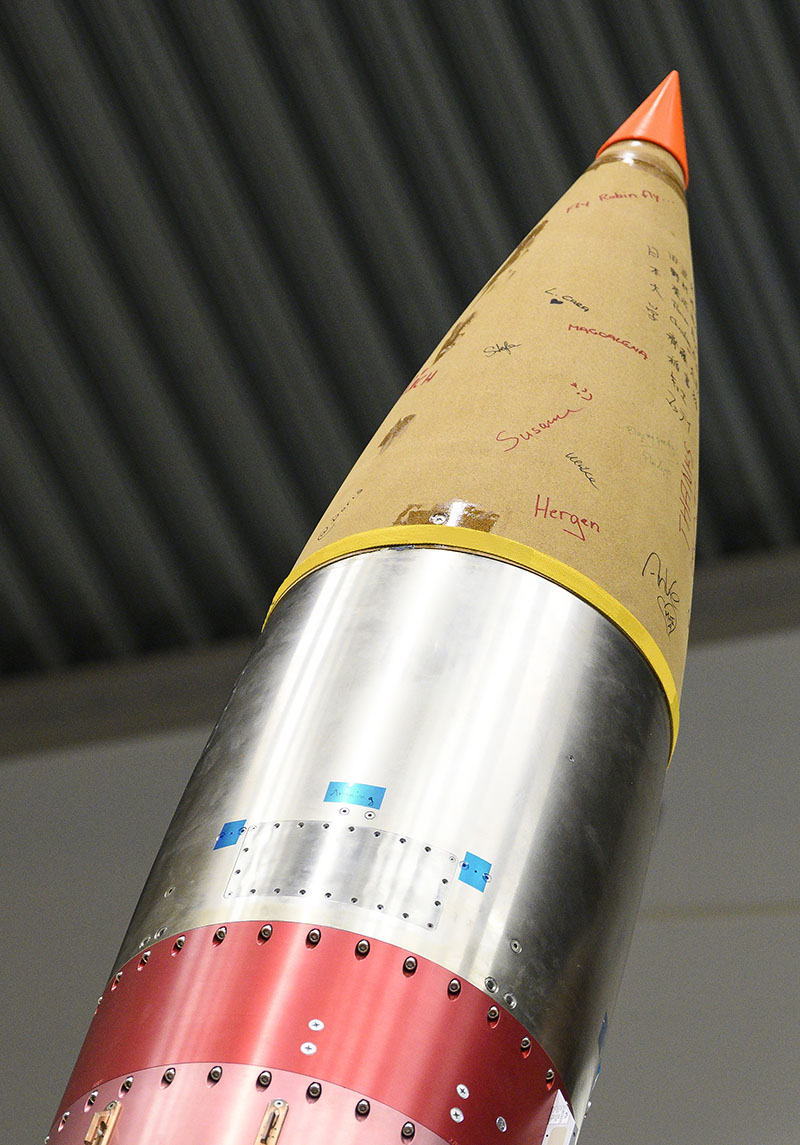At 15:42 on the 15th of February 2024 the TEXUS 59 rocket was successfully launched from Esrange Space Center. Onboard were three experiments conducting material science and biology studies in microgravity.
Better and more effective solar cells, that is the objective after advanced research made by the help of sounding rockets from Esrange Space Center.
One of the experiments onboard is SaFari, from the University of Freiburg. That studies crystallization of liquid silicon under microgravity. This experiment is a frequent flyer on the TEXUS program, and the objective is to get better predictions and models for how silicon behaves upon crystallization. So why do we need to know more about this? Well – silicon is the prime material used for solar cells – and in order to keep up with the green transformation it is important to improve production of the solar cells.
“In the CO2-free ambitions we all have, this is a very important point to make a much more efficient solar panel. Producing them is a really energy consuming process and therefore the whole chain needs to be optimized.” says Andreas Schütte, Program manager for TEXUS at Airbus.

Safer space voyages
The experiment TOPOFLAME from the University of Bremen takes a closer look at the behaviour of a flame during microgravity conditions. In this experiment a fuel will be burnt under a constant gas pressure, similar to the conditions as for spacecrafts in operation. The flame will be recorded by several cameras and the soot will be collected for evaluation after return of the experiment hardware.
Main objective is to improve safety onboard spacecrafts by investigating how a fire propagates under microgravity. It is possible to conduct these kinds of studies, for example onboard the ISS but it is safer to do it without human presence.
“Sounding rockets without humans onboard is certainly well suited to perform this kind of experiments since the fumes from the fire are toxic and not suited for a human environment. Also, the fire could potentially run out of control if the test is conducted onboard ISS. Introducing safety measures is very complex, so sounding rockets are a safe way to go” says Andreas Schütte.
Immune cells in space
In the last experiment, T-REX, the University of Zürich is conducting biological science on human cells, so-called T-lymphocytes. The mechanisms of gravity perception in mammalian cells are still much unknown. In 2015 the same team of scientists studied how these cells are affected by the gravity from the rocket launch but also how the cells behave in and are affected by microgravity conditions in space. The previous study revealed that gravity changes alter the organisation of the genes. Nine years later it is time to continue the research, this time with more advanced diagnostic systems hoping to extract more data and to find out if Earth’s gravity stabilizes and maintains the gene architecture.
One big challenge during the launch and preparations is to reconstruct the very same conditions as the first launch. This means that same temperature, same timing, preparations, and payload recovery must be ensured in order to be able to compare the data.
“It is important that the samples are recovered very quickly after the launch” says Andreas Schütte.
There have been several delays for the TEXUS 59 campaign, and from SSC we are happy that we finally could launch the rocket and that the launch went very well and was executed as planned. The payload has been recovered and the scientists are now going through all the data.
“I would like to thank everyone that has worked with the campaign and to commend them for their agility in adapting during the campaign. We succeeded with a rocket launch that followed the trajectory exactly as expected” says Lena Gälldin, project manager at SSC.


